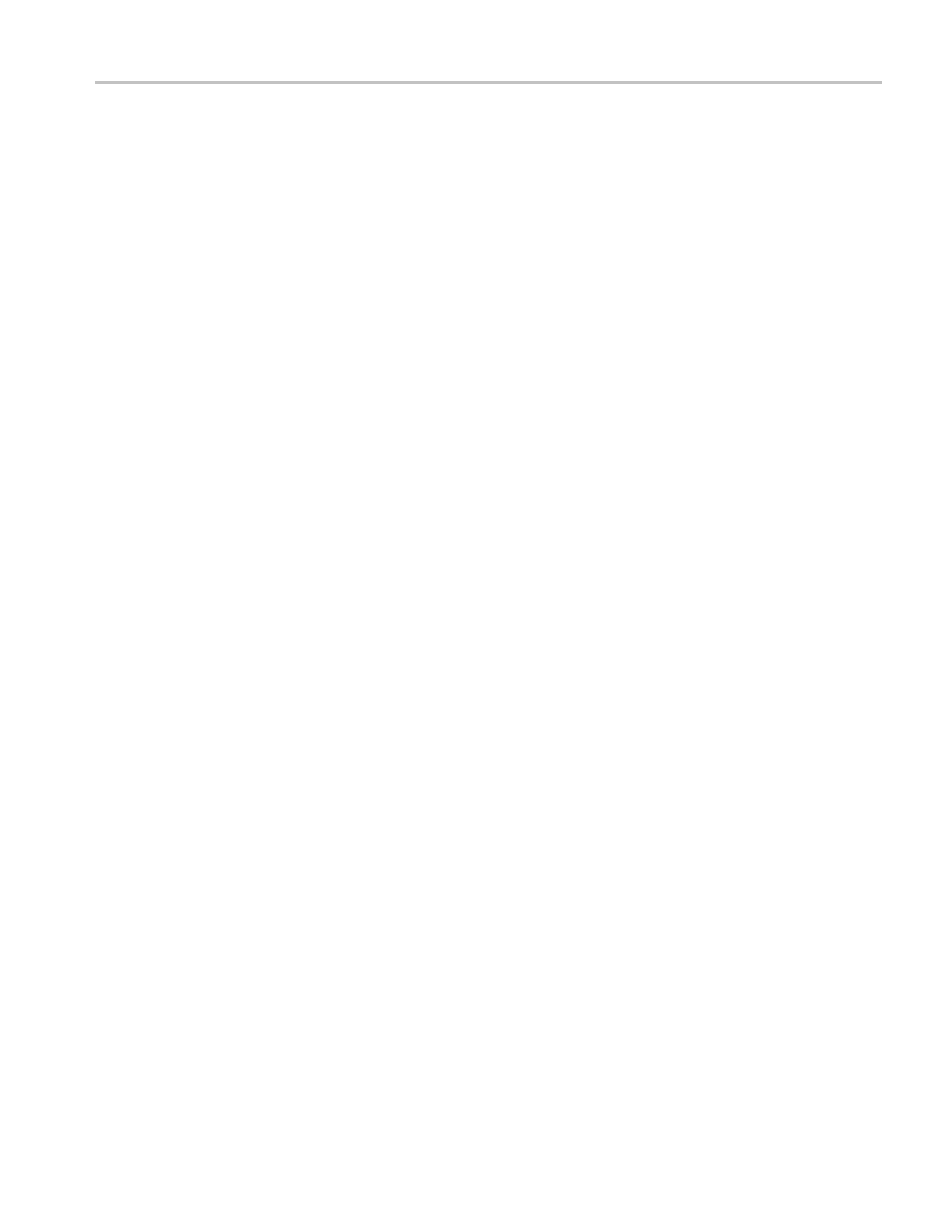Commands Listed in Alphabetical Order
TRIGger:{A|B
}:PULse:TIMEOut:POLarity
This command sets or queries the polarity for the pulse timeout trigger. This
command is equivalent to selecting Timeout Setup from the Trig menu and setting
the desired p
olarity in the Trigger When box.
Group
Trigger
Syntax
TRIGger:{A|B}:PULse:TIMEOu t:POLarity
{STAYSHigh|STAYSLow|EITher }
TRIGger:{A|B}:PULse:TIMEOu t:POLarity?
Related Commands
TRIGger:{A|B}:PULse:TIMEOut?
Arguments
STAYSHigh indicates that a pulse edge must stay high (positive) for the required
time period to permit timeout triggering to occur. This is the default polarity.
STAYSLow indicates that a pulse edge must stay low (negative) for the required
time period to permit timeout triggering to occur.
EITher indicates that the polarity of the timeout trigger can stay either high
or low (positive or negative) for the required time period to permit time o ut
triggering to occur.
Examples
TRIGGER:A:PULSE:TIMEOUT:PO LARITY STAYSHIGH sets the polarity of the
A timeout trigger to positive.
TRIGGER:A:PULSE:TIMEOUT:PO LARITY? might return
:TRIGGER:A:PULSE:TIMEOUT:P OLARITY EITHER, indicating that
the polarity of the A timeout trigger can be either positive or negative.
TRIGger:{A|B}:PULse:TIMEOut:POLarity:CH<x>
This command sets or queries the polarity for the A or B pulse timeout trigger for
the channel.
This command is equivalent to selecting Transition Setup from the Trig menu and
then setting the desired Polarity for the channel.
Group
Trigger
Syntax
TRIGger:{A|B}:PULse:TIMEOu t:POLarity:CH<x>
{STAYSHigh|STAYSLow|EITher }
TRIGger:{A|B}:PULse:TIMEOu t:POLarity:CH<x>?
DPO7000, DPO70000/B and DSA7000/B Series Programmer Manual 2-533

